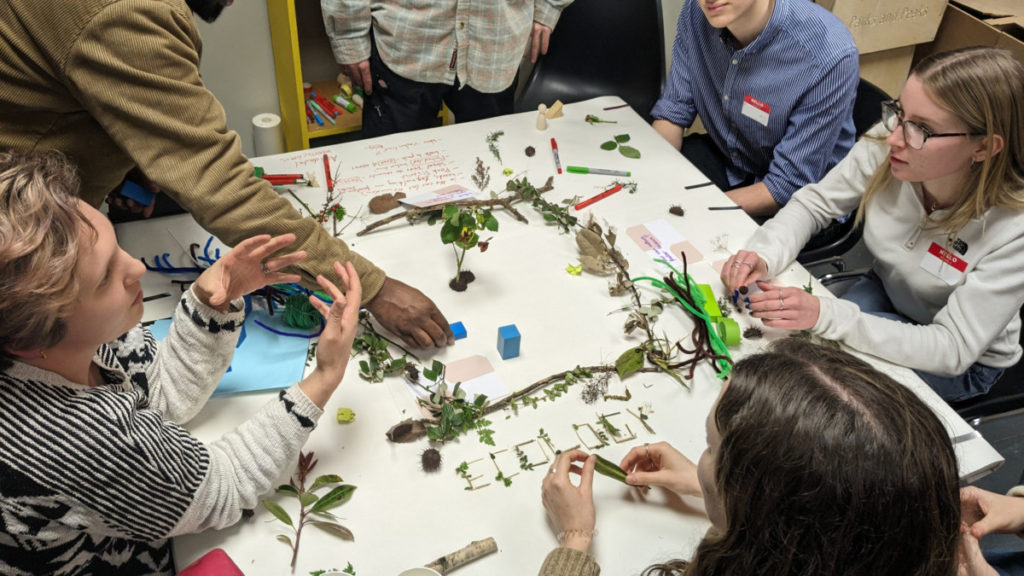Written by:
By Sam Penrose
Sam Penrose, a Third-Year Dual Architecture and Landscape student from The University of Sheffield gives his point of view about taking part in a WEdesign co-design event in the Live Works space in February.

I joined the WEdesign student team for a co-design event to get an idea about how community engagement can aid the design of cities and how the voices of non-architects or designers can fit into the conversation. On 28 February, we assisted in running an event with the general public in Sheffield in the Live Works building, for an evening of big idea discussion and open conversation.
A few weeks prior to the main event, we had an initial briefing session that introduced the event and themes to us, to give us time to consider what we would like to discuss with the contributors. Our four teams had to explore the main theme through the lenses of community, ecology, education, and practice.
I was a student facilitator for the Ecology team, leading the discussion and making sure we kept on track with time. It was a useful learning experience to think about how to get the most out of people and create an environment where everyone felt comfortable to contribute. We came up with initial ideas, got into our groups and started thinking about how we would run our teams. We then met each other before the event to gather props and resources to enrich our tables on the day and give people equipment to express their ideas.

It was an interesting task to work out how to not impart our specific knowledge onto people, but instead make them think more about the world around them, in terms of challenges and opportunities for improvement in the urban environment. Whilst we may know issues and solutions about urban environments, the blue sky thinking of an outside experience is really helpful to analyse real-life problems. It was great to see the broad range of voices who came to contribute to the session, with very engaging and active discussions.
For the event we brought along props and design tools to aid discussion and exhibition of our ideas, as well as the three open questions we had come up with to guide conversation. The part of the event I enjoyed the most was the model-making section and culmination of our discussions into something quick and visual. It surprised me how comfortable people were sharing ideas and creating something, especially for people who aren’t used to expressing their ideas in three dimensions and in bringing everyone’s ideas together under a more specific theme drawn out of the conversation.
For the ecology model, we used natural materials sourced from the local area, as well as some crafts material. We made a three-dimensional piece in 15 minutes which expressed our ideas about threading nature through each part of the city rather than acting as a destination people need to set aside time for to escape to. Time was challenging as we had to think quickly on our feet as a team, but it made us make some snap decisions and create something very loose and interpretive.

Coming up with questions beforehand which weren’t leading and prompted wider discussion based on personal experience was difficult yet paid off when the conversation found its natural similarities from different viewpoints. The session made me fully recognise the importance of community engagement in design, especially in terms of open discussion rather than leading them towards certain leading themes or questions. In my further work and in practice I will try to use it as a tool to escape statistics and grouping opinions, as well as in early design stages to spark ideas from collaboration and co-design.
My main takeaway from the event is that public engagement is a great way to strengthen connections between the architect, general public and end users, where this conversation is not usually so strong. It makes sure we prioritise people rather than buildings in our approach to design, in urban environments which work for their actual users.
About the Author
Sam Penrose is a Y3 Dual Architecture and Landscape Student at University of Sheffield.
Instagram: @sjp_architecture
Website: sjparchitecture.myportfolio.com

